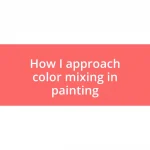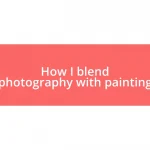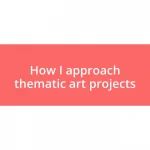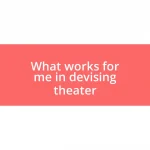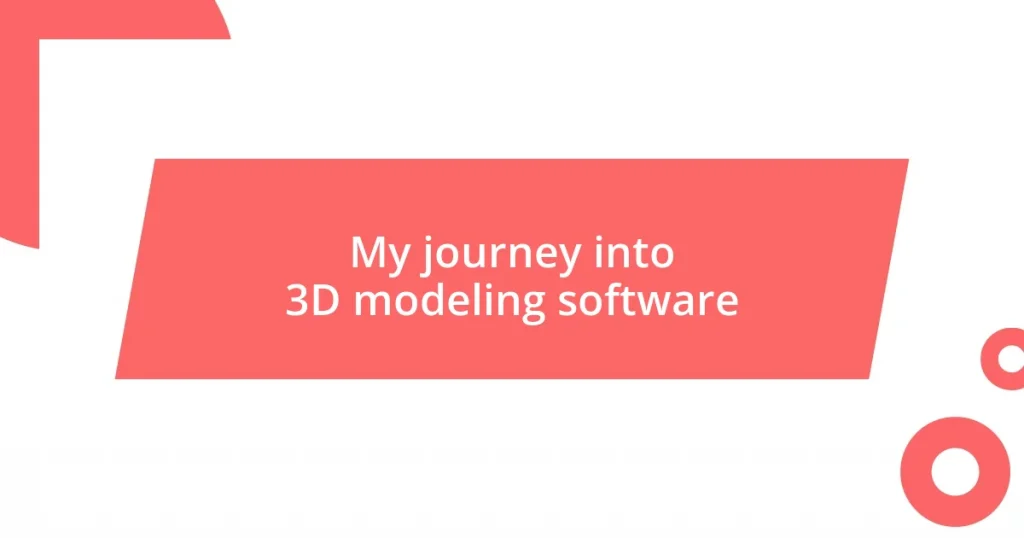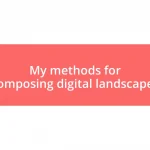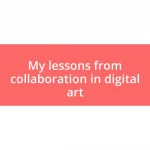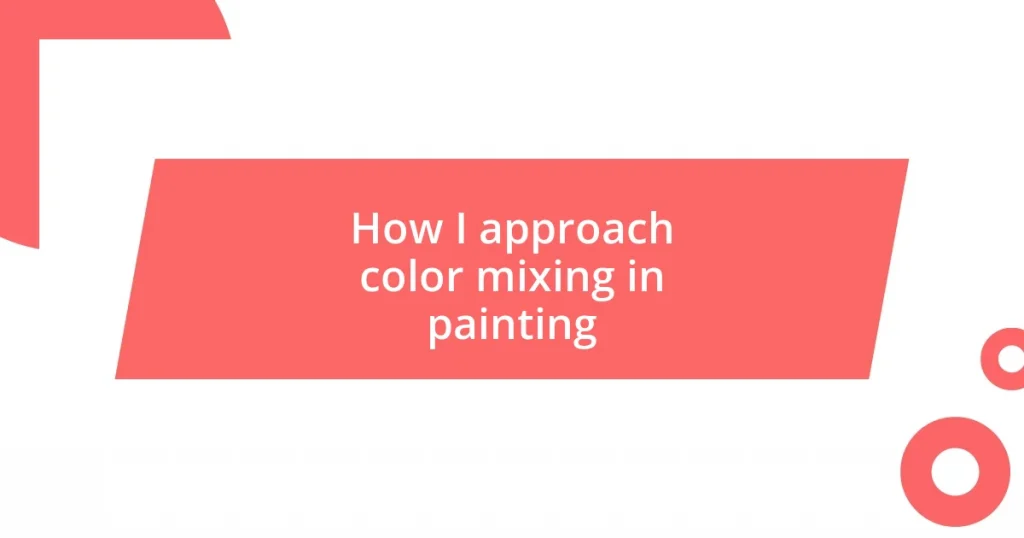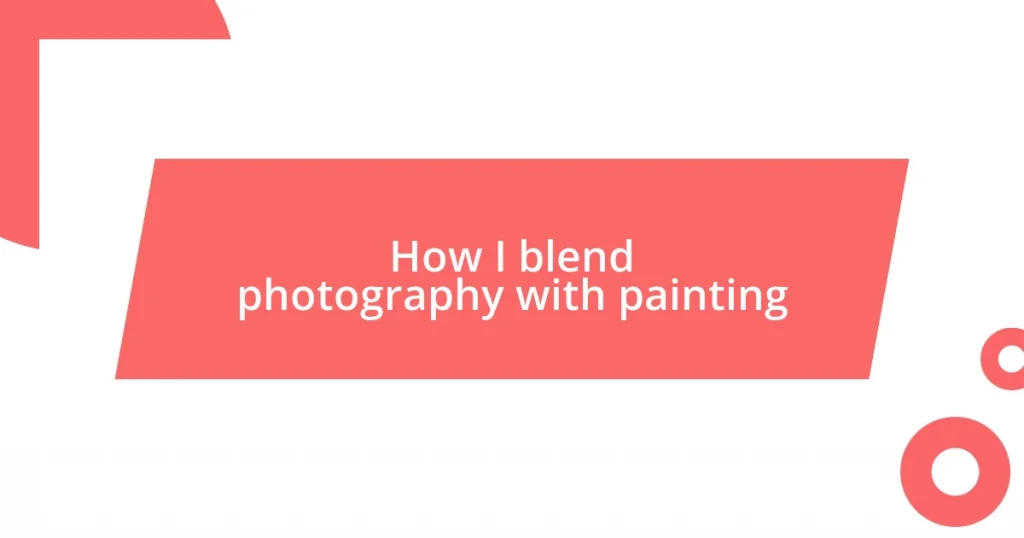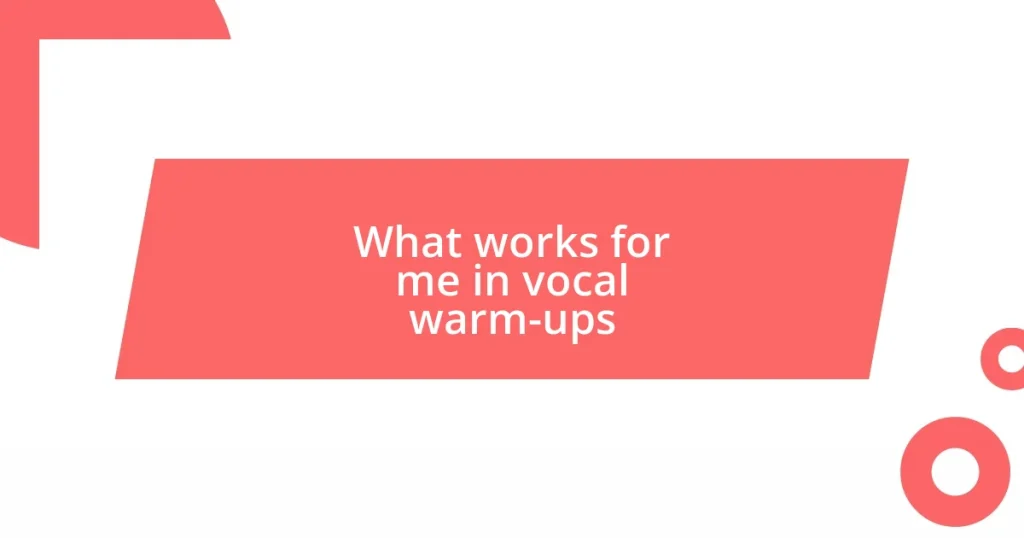Key takeaways:
- Exploring 3D modeling software opens a range of creative possibilities, with various tools available catering to different skill levels.
- Building your first 3D model is a significant milestone that boosts confidence, emphasizing the importance of starting simple and celebrating small victories.
- Consistent practice, experimentation, and community feedback are crucial for skill improvement and successful showcasing of 3D work online.
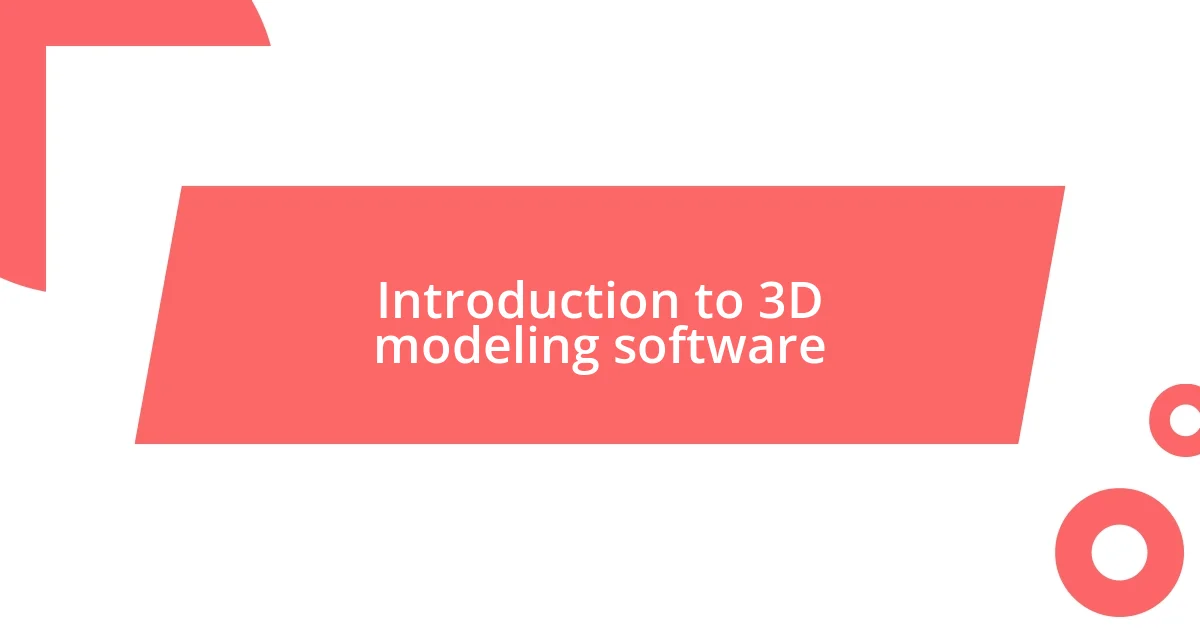
Introduction to 3D modeling software
Diving into the world of 3D modeling software is like opening a treasure chest of creative possibilities. I remember the first time I navigated through a modeling program; I felt a rush of excitement as I transformed simple shapes into something that resembled reality. Have you ever looked at a digital creation and wondered how it came to life? That’s the magic of 3D software.
What truly fascinates me is the sheer variety of tools available today, catering to everyone from hobbyists to seasoned professionals. Each piece of software has its own personality, and finding the right fit can be like dating—sometimes, you just know when it clicks. For instance, when I tried Blender, I felt almost at home with its intuitive interface and robust community, which made me realize that learning is often a more enjoyable journey when you’re not alone.
As I reflect on my experiences, I realize that 3D modeling invites us to challenge our creativity and technical skills. Have you ever considered how modeling impacts industries beyond art, such as architecture and gaming? This capability to bridge various fields ignites a deeper appreciation for the technology behind it, and it’s a journey that offers endless learning opportunities.
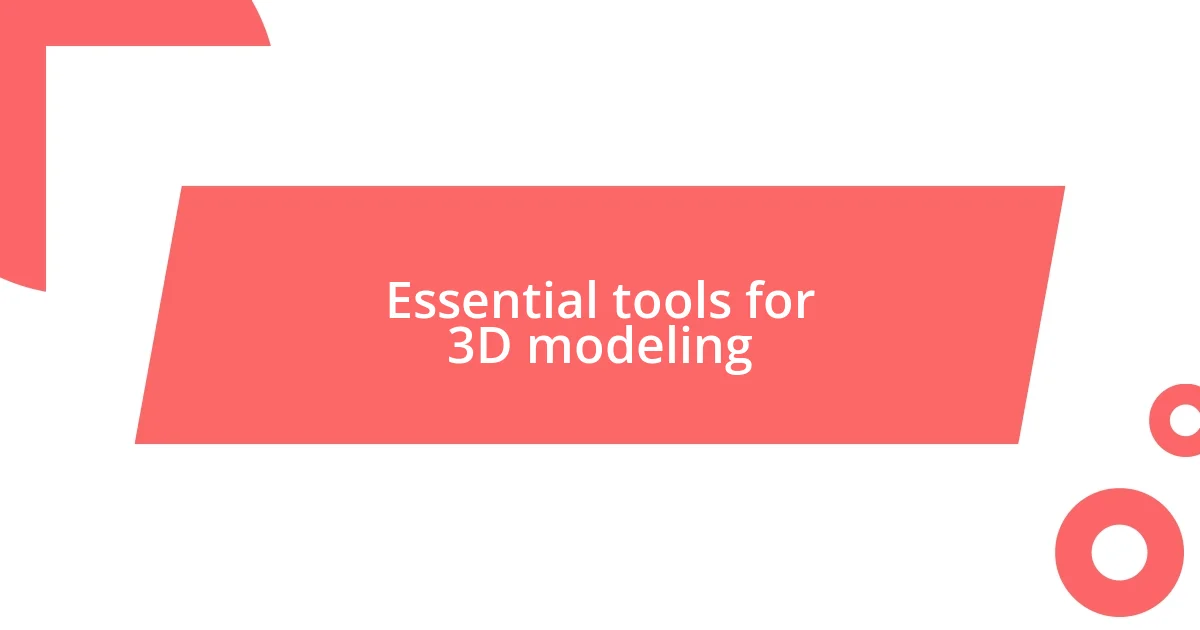
Essential tools for 3D modeling
When it comes to essential tools for 3D modeling, I can’t emphasize enough how vital the right software is. Each program comes with features that can either make or break your modeling experience. I remember struggling at first to manipulate a model, only to realize that the software’s tools weren’t as intuitive as I needed them to be. Finding a tool that complements your style can truly elevate your creative process.
Here are some key tools that every budding 3D modeler should consider:
- Blender: Open-source and beginner-friendly with a wide array of features.
- Autodesk Maya: Industry-standard for animation and modeling, great for professionals.
- SketchUp: Perfect for architectural designs with a straightforward interface.
- ZBrush: Ideal for intricate details and high-resolution sculpting.
- Cinema 4D: Known for its motion graphics capabilities and user-friendly workflow.
Choosing the right combination of tools has a profound impact on how you bring your ideas to life. The first time I successfully created a detailed character model, I felt a rush of pride that I hadn’t expected. It was exhilarating to see my vision morph from a digital sketch to a fully realized figure. Embracing these essential tools can truly transform your journey into 3D modeling!
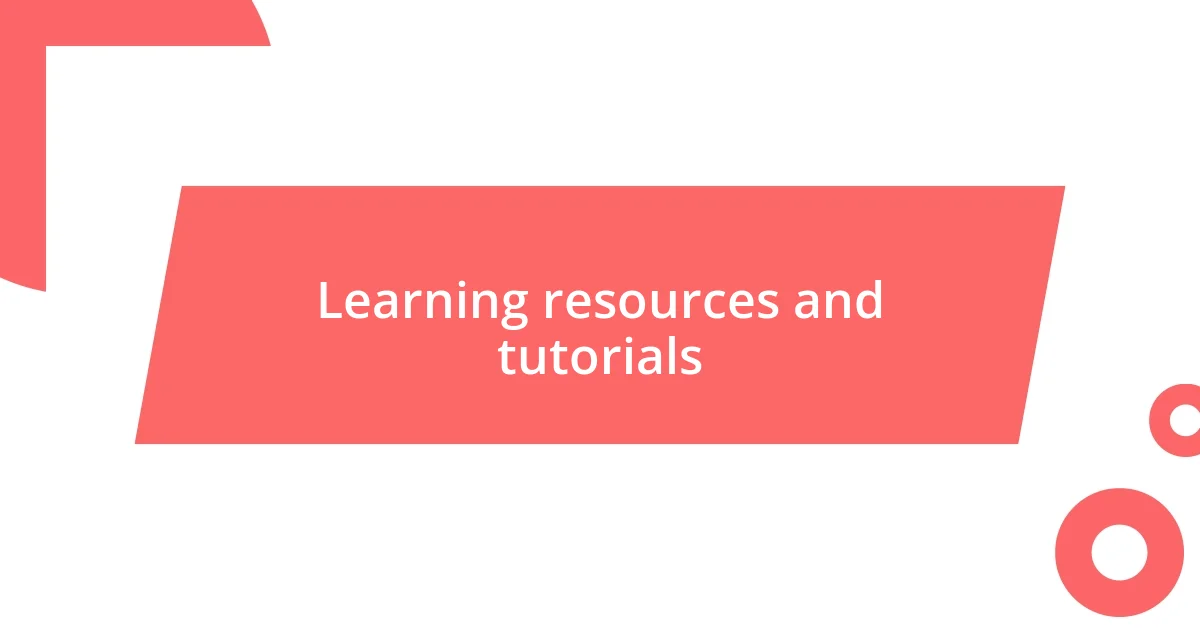
Learning resources and tutorials
Learning resources and tutorials are crucial in navigating the landscape of 3D modeling software. I remember stumbling upon a standout tutorial series on YouTube. It changed my entire perspective on the craft. The step-by-step guidance felt like having a mentor by my side. Those initial lessons boosted both my skills and confidence tremendously.
I’ve found that online communities can be just as valuable as official tutorials. Forums like Stack Exchange and Reddit are gold mines for both problems and solutions. Many times, I’ve popped into these forums to seek advice on a tricky modeling issue, and the sense of camaraderie from helping others along the way only added to the learning experience.
Below, I’ve compiled a comparison table of popular learning resources that can be beneficial for 3D modeling enthusiasts. Each resource comes with its own strengths, making it easier to find the right fit for your learning style.
| Resource | Type |
|---|---|
| YouTube Channels | Video tutorials, diverse content |
| Udemy Courses | Structured courses, paid but often detailed |
| Blender Guru | Specific to Blender, highly regarded tutorials |
| Skillshare | Variety of courses, community feedback |
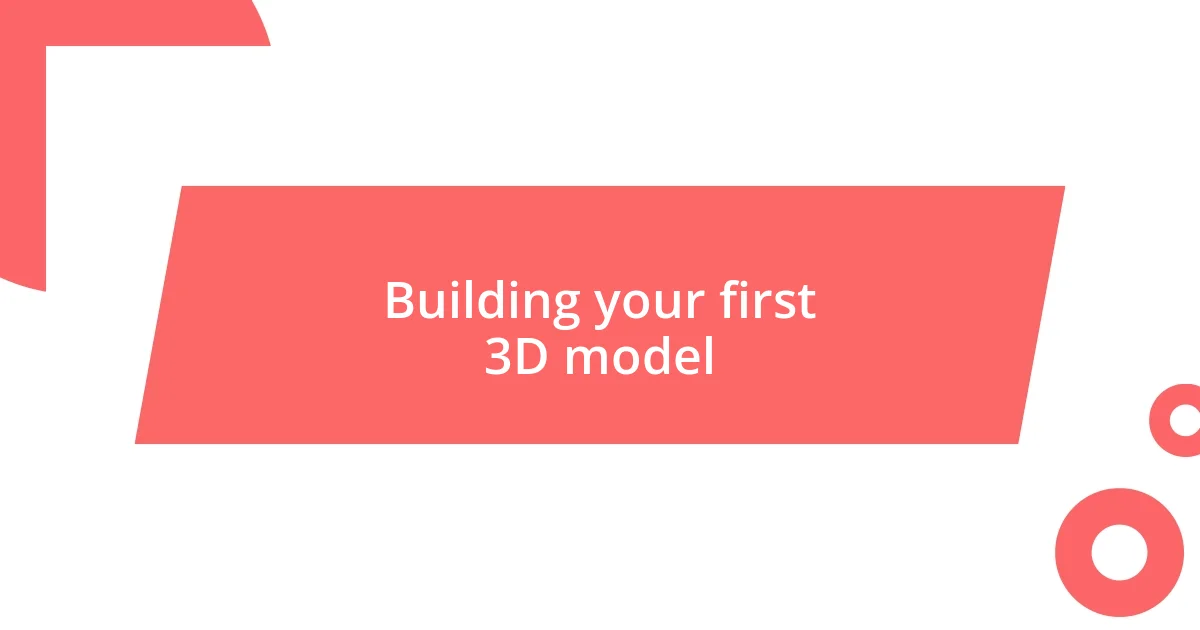
Building your first 3D model
Building your first 3D model is an exciting milestone, filled with a mix of anticipation and a hint of overwhelm. I remember the thrill I felt when I opened my chosen software for the first time, staring at the blank canvas ready for creation. It’s important to start simple; I opted for a basic geometric shape, allowing my mind to explore possibilities without getting bogged down by complexity.
As I began shaping my first model, I felt a unique blend of frustration and exhilaration. It’s normal to hit walls when the software behaves unexpectedly. I distinctly recall one instance where I struggled to perfect a curve, and at that moment, I asked myself, “Why is this so difficult?” But after fiddling around with the tools and watching a quick tutorial, I managed to push through the difficulty. That feeling of crafting something tangible—however rudimentary—was a significant boost to my confidence.
When you finally take a step back and see your first creation on the screen, it’s a moment of pride. I still remember letting out a little cheer when I completed my first model, a simple cup, but it made me feel like an artist. Keeping that initial experience in mind, I encourage you to celebrate small victories as you build your journey—each model you create is a stepping stone toward mastering the craft.
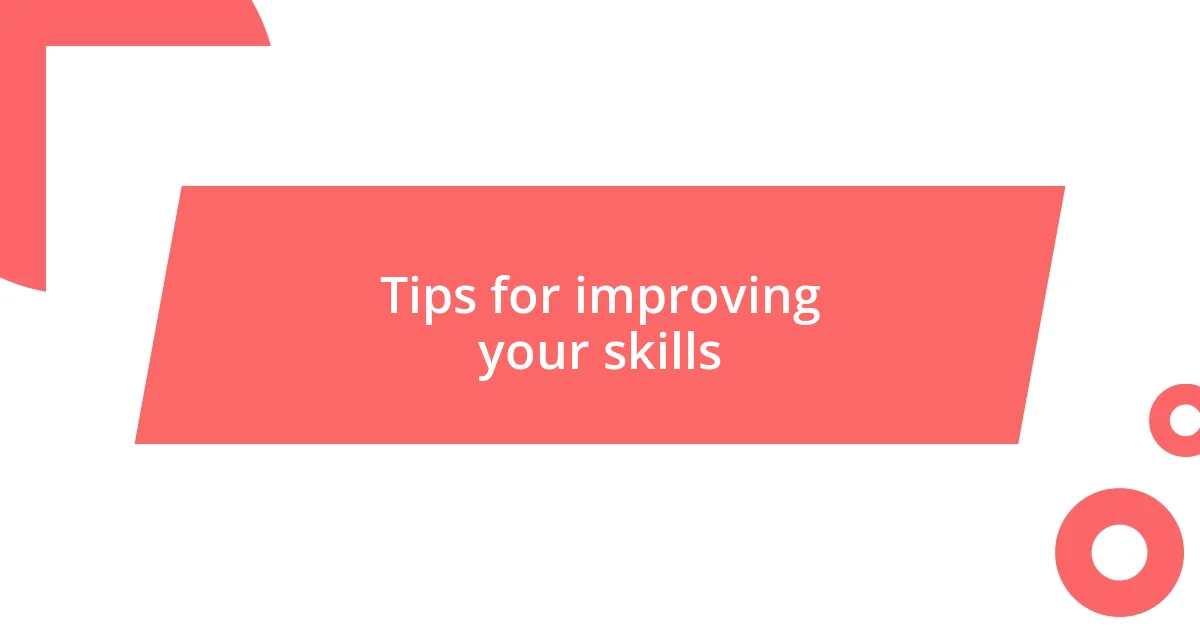
Tips for improving your skills
Practicing consistency is one of the best tips I can share. When I dedicated specific time slots to practice each week, I noticed remarkable improvements in my 3D modeling skills. Have you ever tried setting aside even just an hour? I was surprised at how those small, consistent efforts gradually accumulated, transforming my abilities and confidence.
I’ve also discovered that experimenting is key to growth. I remember one weekend when I decided to step outside my comfort zone and tackle a complicated model. Sure, it was a challenge, and I faced a lot of trial and error, but that experience was eye-opening. Each mistake taught me something valuable. Isn’t it fascinating how failures can actually guide our success?
Lastly, I can’t stress enough the importance of seeking feedback from others. When I shared my finished models in online forums, I was often met with constructive criticism and encouragement. That interaction not only helped me refine my skills but also created a sense of belonging. How often do we overlook the power of community in our learning process? Engaging with others who share your passion can turn solitary practice into a vibrant exchange of ideas.

Showcasing your 3D work online
When it came time to showcase my 3D models online, I felt a wave of both excitement and vulnerability. Sharing something you’ve poured your time and energy into can be daunting, right? I vividly recall uploading my first model to a community site, heart racing as I clicked the ‘post’ button. The feedback I received—both positive and critical—was a mix of relief and validation, motivating me to continue refining my craft and share more boldly in the future.
Utilizing social media platforms became a game-changer for me. It’s astonishing how a simple tweet or Instagram post can reach thousands of people. I remember posting a timelapse of me modeling a complex piece. The comments flooded in, full of questions and admiration. That moment made me realize how accessible our art really is; it connects us with people who resonate with our creative journey. Have you thought about how sharing your work could inspire others?
In my experience, creating a personal website to showcase my portfolio added a professional touch. It felt liberating to curate my work and present it in a way that best represented my artistic vision. I chose to include behind-the-scenes content, providing viewers with glimpses into my process. When someone reached out to me for collaboration after viewing my site, I realized that sharing my journey not only showcased my skills but also opened doors I had never anticipated. It’s amazing how sharing your work can lead to opportunities beyond your wildest dreams!
